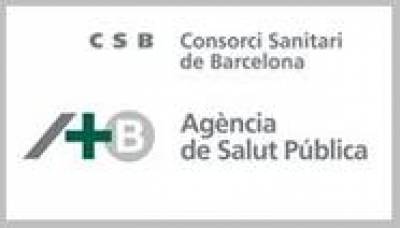Each of the following maps demonstrates the heterogeneous nature of neighbourhoods in Zurich in terms of socio-economic characteristics. These maps highlight clear patterns of geographical segregation within Zurich, whether one examines social deprivation in the city by unemployment, manual worker density or educational attainment. Socio-economic deprivation is primarily concentrated in neighbourhoods located in Northern and Western areas of the city. High deprivation seen in these areas marks a sharp contrast to the affluence observed in South-Eastern Zurich, among areas surrounding Lake Zurich. Socio-economic indicators were derived using data from the 2000 Census.
The following socio-economic indicator maps are colour-coded; high concentrations of a socio-economic characteristic are represented by brown tones, which lighten as the concentration reduces. Intermediate concentrations of a socio-economic characteristic are represented by the white tone. The lowest concentrations are represented by green tones. Uninhabitable areas, such as Lake Zurich in the south of the city, are shown in stripes. For further information about how these maps were created, please visit the methodological section of the Atlas. Click on each image for a full-screen view of the maps below.
Unemployment
Area Distribution of Unemployment in Zurich
This map shows the distribution of unemployment throughout Zurich. High levels of unemployment (represented by brown tones) are observed in the centre of Zurich, located above Lake Zurich. From here, high unemployment continues to the North-West and the West. Whilst areas with high levels of unemployment are commonplace in Northern Zurich, these areas frequently reside next to those with relatively lower unemployment levels, illustrated by the heterogeneous patterns observed on the map. In contrast to this heterogeneity, South-Eastern Zurich has consistently low levels of unemployment, as shown by the large cluster of green and dark green coloured areas located near and to the East of Lake Zurich. Low levels of unemployment are also observed, to a lesser degree, in Northern Zurich. This map demonstrates a pattern of social deprivation by levels of unemployment; whereby deprivation is common in the central Zurich and the North-East of the city.
Manual Workers
Area Distribution of Manual Workers in Zurich
This map shows the distribution of manual worker density throughout Zurich. The pattern of manual worker density reinforces the pattern of unemployment shown above. As with unemployment, the highest proportions of manual worker density (shown in brown tones) are concentrated in the Northern and Western outkskirts of Zurich. The lowest proportions (shown in green tones) are observed in the East and South-East. But in contrast to the pattern of unemployment in Zurich, deprivation measured by high manual worker density, now predominates Western Zurich. Intermediate levels (shown in white) are dominant in the centre of Zurich.
Primary Education
Area Distribution of Adults with Low Educational Attainment in Zurich
This map shows the area distribution of adults that completed formal schooling at the primary level in Zurich. As with unemployment, high levels of low educational attainment are concentrated in the North-East and in the centre of Zurich spanning West. Although areas least burdened by low educational attainment (shown in green tones) are located throughout Zurich, most evident is the concentration of these areas in the South-East. This map emphasizes the relative socio-economic inequalities between the South-East and other areas of the city.
University Qualifications
Area Distribution of Adults with University Qualifications in Zurich
This map shows the area distribution of the proportion of adults that have obtained university qualifications in Zurich, and as expected, it demonstrates the inverse of the patterns of low educational attainment shown above. Areas with the highest proportion of university qualifications are located in the South-East, as shown by the brown coloured areas which surround and are located to the East of Lake Zurich. Areas with the lowest proportion of university qualifications (shown in green tones) reside in Northern and Western Zurich. The geographical segregation in Zurich by university qualifications is more pronounced than that observed by low educational attainment, as shown by the relative homogeneity in Northern, Western and Southern parts of the city. Northern and Western Zurich is substantially burdened by a scarcity of university qualifications.
 Close
Close





